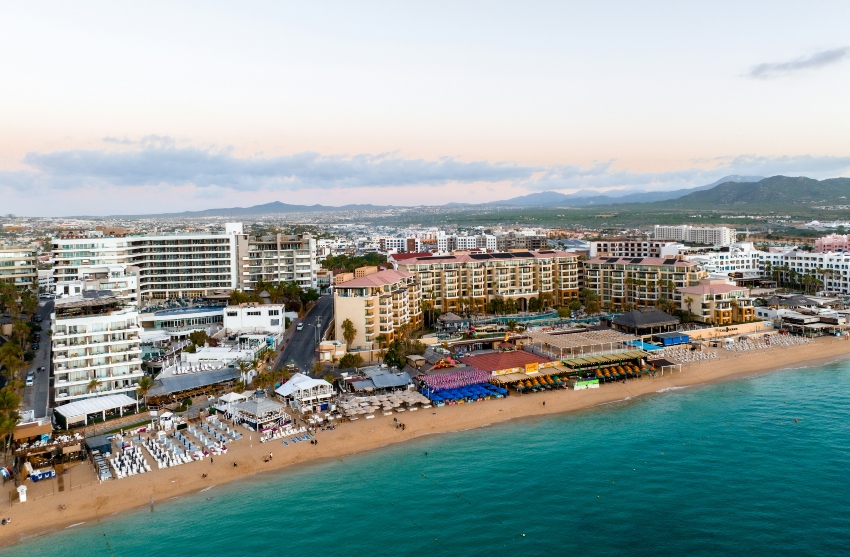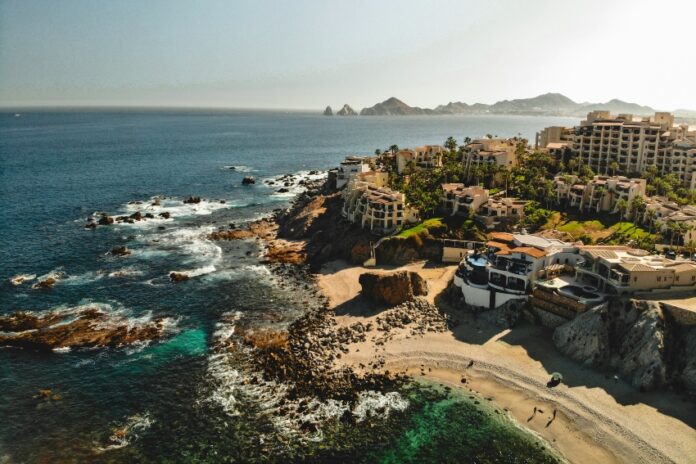Every time I’ve checked my search engine over the years to find out what the most frequently asked questions are about Los Cabos, one of the top queries has to do with safety. Is it safe in Los Cabos? This is amazing to me. As a 15-year resident, I’ve always felt safer in Los Cabos than I did at any time living in the U.S., from the small town where I grew up to the cities I lived in later.
I think this anxiety, or at least concern, on the part of potential tourists has something to do with the fact that only negative images of Mexico are shown on U.S. newscasts. I get it. If you’ve never visited Los Cabos and that kind of negativity is all you see, it can make you fearful. So let’s take away the distorted lens and just look at the facts.
Los Cabos is one of the world’s safest travel destinations

Los Cabos has welcomed 80 million tourists during the 21st century. Two have died under questionable circumstances. That rate (0.000000025%) is astronomically small, and it bears noting that in one of the resulting investigations, a fellow American traveling with the victim was the chief suspect based on video evidence.
Tourists are incredibly safe in Los Cabos, and the municipality works very hard to keep it that way. How safe? That statistic I just quoted makes visiting Los Cabos safer than traveling to London, Paris, Venice and Madrid. It’s certainly safer than vacationing in any city in the U.S.
Even if you factor in crime in the municipality at large — including in the worst neighborhoods and among the poorest residents — Los Cabos remains very safe and compares very favorably (see the graph above).
The danger I warn family and friends about
Of course, you should pay attention to your surroundings and exercise normal precautions, as you would anywhere. But when I have friends or relatives visit, the only danger I warn them about is swimming at the wrong beach. There have been 15 documented drowning deaths since 2010 (seven of them U.S. tourists), or about one per year on average. Some local beaches – specifically, Divorce Beach and Solmar Beach – have very strong rip currents and are not safe for swimmers.
So I would caution tourists to pay attention to the flags posted on virtually every local beach. Green flags indicate calm waters and safe swimming conditions. Yellow and red, like colors on a traffic light, advise caution or avoiding swimming due to unsafe conditions, respectively. Black flags mean the beach is closed.
Other than that, have fun. Los Cabos is not only one of the most beautiful places on Earth, but one of the safest.
What’s the difference between Cabo San Lucas, San José del Cabos, and Los Cabos?

This is another question frequently asked by those who’ve never visited, and I can easily understand why it would be confusing. Especially since the destination is also known simply as “Cabo.”
Cabo San Lucas and San José del Cabo are coastal cities 20 miles apart along the southern rim of the state of Baja California Sur (BCS) at the very bottom of the 760-mile-long Baja California peninsula. BCS has five municipalities, the southernmost of which is Los Cabos.
So Cabo San Lucas and San José del Cabo are cities within the larger Los Cabos municipality, and the “Cabo” descriptor, which both cities share, means “Cape” in Spanish. Thus, when Los Cabos became a municipality in 1981, it took its name, which translates as “The Capes,” from its two largest communities.
Which city should I stay in? Cabo San Lucas or San José del Cabo?
First, let me point out that these aren’t the only two options. There’s also La Ruta Escénica, the 20-mile coastal corridor that connects the cape cities, and the East Cape, the 70-mile coastal stretch northeast of San José de Cabo that features small communities like Cabo Pulmo, La Ribera, Buena Vista and Los Barriles (the latter is actually in La Paz municipality).
Staying in any of these areas doesn’t preclude visiting the others. But there is a difference in terms of cost, and in the attractions which are most conveniently close. For example, the average cost of a hotel room is far higher in La Ruta Escénica (US $592, as of July 2025) than it is in Cabo San Lucas (US $269) or San José del Cabo (US $294). Why? Because La Ruta Escénica has the highest percentage of ultra-luxury resorts.
So, based on your budget, choosing Cabo San Lucas or San José del Cabo might be the better choice. The former, it should be noted, is famed for its fishing and its nightlife, while the latter is considered more sophisticated, with better dining, arts and culture. Thus, you may want to choose one or the other based on these factors, too.

Is it preferable to pay in dollars or pesos?
The answer is always pesos. That’s not to say you can’t pay with dollars. U.S. dollars are accepted everywhere in Los Cabos. But because businesses here establish their own exchange rates, those rates are always going to be favorable to them. Meaning, every time you pay for a transaction in dollars – be it a restaurant bill, a souvenir purchase, etc. – you’re losing several dollars worth of value against the exchange rate.
For example, let’s say an entrée on a restaurant menu in Los Cabos is 400 pesos. You want to pay in dollars, and the restaurant states that its exchange rate is US $1 to 17 pesos. According to the actual exchange rate, this entree should cost you $21.44. But instead, you’re paying $23.52. It may not sound like much. But multiply the difference by every transaction during the length of your stay, and the money you’re losing adds up fast. I can tell you, as someone who lives here, that I never pay in dollars for anything.
Have any questions about Los Cabos you’d like answered? Leave them in the comments below, and I’ll answer them in the next edition of this column.
Chris Sands is the Cabo San Lucas local expert for the USA Today travel website 10 Best, writer of Fodor’s Los Cabos travel guidebook and a contributor to numerous websites and publications, including Tasting Table, Marriott Bonvoy Traveler, Forbes Travel Guide, Porthole Cruise, Cabo Living and Mexico News Daily. His specialty is travel-related content and lifestyle features focused on food, wine and golf.
